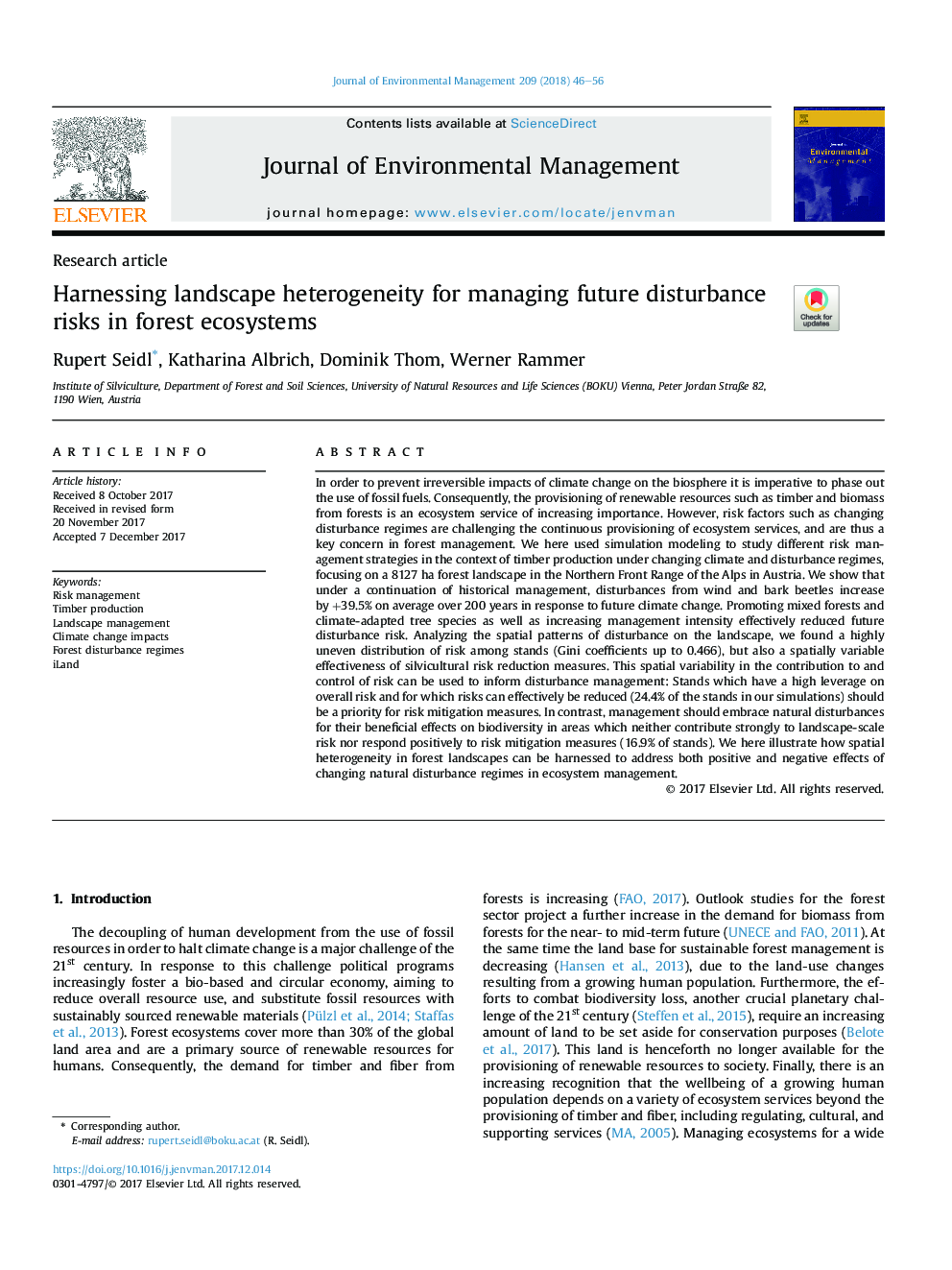| کد مقاله | کد نشریه | سال انتشار | مقاله انگلیسی | نسخه تمام متن |
|---|---|---|---|---|
| 7478119 | 1485209 | 2018 | 11 صفحه PDF | دانلود رایگان |
عنوان انگلیسی مقاله ISI
Harnessing landscape heterogeneity for managing future disturbance risks in forest ecosystems
ترجمه فارسی عنوان
ناهمگونی چشم انداز برای مدیریت خطرات ناشی از اختلال در آینده در اکوسیستم های جنگلی
دانلود مقاله + سفارش ترجمه
دانلود مقاله ISI انگلیسی
رایگان برای ایرانیان
کلمات کلیدی
موضوعات مرتبط
مهندسی و علوم پایه
مهندسی انرژی
انرژی های تجدید پذیر، توسعه پایدار و محیط زیست
چکیده انگلیسی
In order to prevent irreversible impacts of climate change on the biosphere it is imperative to phase out the use of fossil fuels. Consequently, the provisioning of renewable resources such as timber and biomass from forests is an ecosystem service of increasing importance. However, risk factors such as changing disturbance regimes are challenging the continuous provisioning of ecosystem services, and are thus a key concern in forest management. We here used simulation modeling to study different risk management strategies in the context of timber production under changing climate and disturbance regimes, focusing on a 8127 ha forest landscape in the Northern Front Range of the Alps in Austria. We show that under a continuation of historical management, disturbances from wind and bark beetles increase by +39.5% on average over 200 years in response to future climate change. Promoting mixed forests and climate-adapted tree species as well as increasing management intensity effectively reduced future disturbance risk. Analyzing the spatial patterns of disturbance on the landscape, we found a highly uneven distribution of risk among stands (Gini coefficients up to 0.466), but also a spatially variable effectiveness of silvicultural risk reduction measures. This spatial variability in the contribution to and control of risk can be used to inform disturbance management: Stands which have a high leverage on overall risk and for which risks can effectively be reduced (24.4% of the stands in our simulations) should be a priority for risk mitigation measures. In contrast, management should embrace natural disturbances for their beneficial effects on biodiversity in areas which neither contribute strongly to landscape-scale risk nor respond positively to risk mitigation measures (16.9% of stands). We here illustrate how spatial heterogeneity in forest landscapes can be harnessed to address both positive and negative effects of changing natural disturbance regimes in ecosystem management.
ناشر
Database: Elsevier - ScienceDirect (ساینس دایرکت)
Journal: Journal of Environmental Management - Volume 209, 1 March 2018, Pages 46-56
Journal: Journal of Environmental Management - Volume 209, 1 March 2018, Pages 46-56
نویسندگان
Rupert Seidl, Katharina Albrich, Dominik Thom, Werner Rammer,
